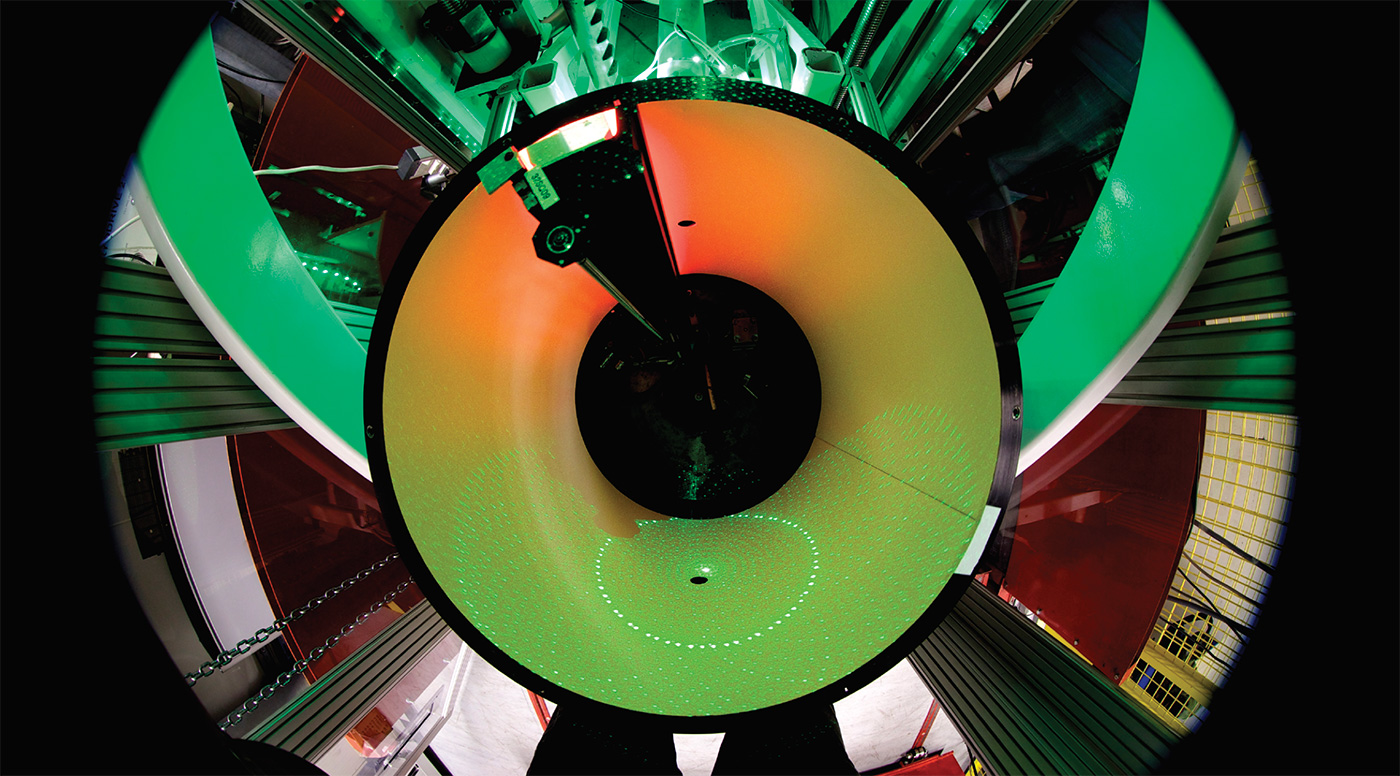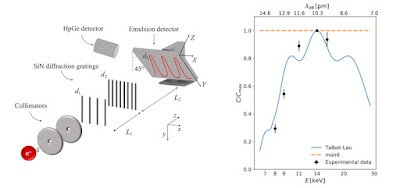
An eye for structure The LADI instrument at the ILL, a quasi-Laue neutron diffractometer used for single-crystal studies of biological macromolecules at high resolution. Neutron Laue diffraction patterns are recorded on a cylindrical detector, allowing the determination of protein structures including the locations of hydrogen/deuterium atoms. Credit: R Cubitt
Topics: COVID-19, High Energy Physics, Neutrons, Particle Physics
Advanced neutron facilities such as the Institut Laue-Langevin are gearing up to enable a deeper understanding of the structural workings of SARS-CoV-2.
The global scientific community has mobilized at an unprecedented rate in response to the COVID-19 pandemic, beyond just pharmaceutical and medical researchers. The world’s most powerful analytical tools, including neutron sources, harbor the unique ability to reveal the invisible, structural workings of the virus – which will be essential to developing effective treatments. Since the outbreak of the pandemic, researchers worldwide have been using large-scale research infrastructures such as synchrotron X-ray radiation sources (CERN Courier May/June 2020 p29), as well as cryogenic electron microscopy (cryo-EM) and nuclear magnetic resonance (NMR) facilities, to determine the 3D structures of proteins of severe acute respiratory syndrome coronavirus 2 (SARS-CoV-2), which can lead to COVID-19 respiratory disease, and to identify potential drugs that can bind to these proteins in order to disable the viral machinery. This effort has already delivered a large number of structures and increased our understanding of what potential drug candidates might look like in a remarkably short amount of time, with the number increasing each week.
Neutron sources join the fight against COVID-19, Matthew Blakeley, and Helmut Schober Institut Laue-Langevin.
